Catherine Ada Kelly, second youngest child of Ellen Quinn and
John 'Red' Kelly was born in Beveridge in North East Victoria on 12 July 1863.
'Red' Kelly died when Kate was only three years old, leaving Ellen a widow with seven children.
Kate's childhood was no doubt one of poverty and struggle, coloured by the exploits of her brothers Ned and Dan.
By the age of 18 Kate Kelly had witnessed far too much brutality and violence. She had also achieved a high level of celebrity in her own right.
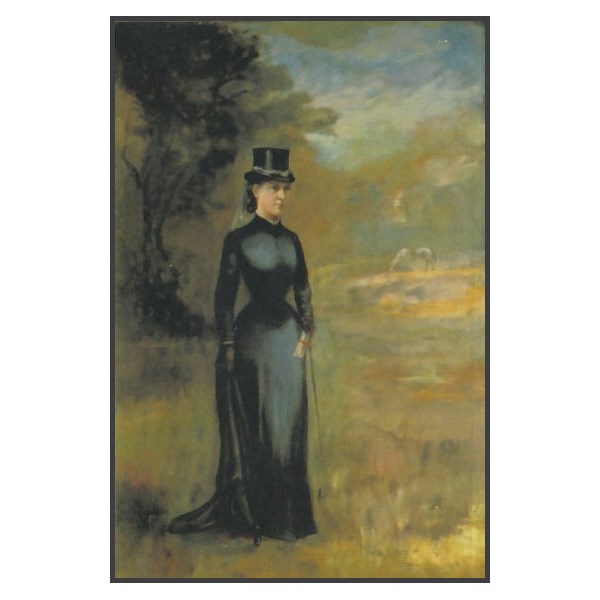
Kate Kelly
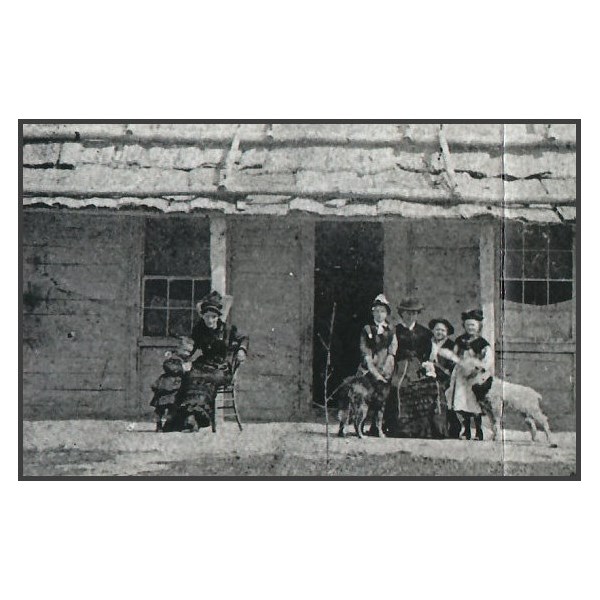
Kate and her Sisters
Many stories survive in folk memory about Kate Kelly's life and death in Forbes. She was described as 'a nice looking girl, with long dark hair* and 'a good servant.' It is claimed that Kate went under the name of Kate Hennessey or Ada because she did not want it known generally that she was a sister of the Kelly boys.
Hugh McDougall, the overseer at Warroo Station, brought Kate to Forbes to work as a domestic for the Jones family at Cadow Station on the South
Condobolin Road some forty kms from Forbes. Cadow and Warroo Stations shared a boundary.
Kate moved into town in 1886 or 1887 and was employed as a domestic for the Luthje, Gunn and Prow families.
It's probable that Kate met William Henry 'Bricky'
Foster at the livery stables on the corner of Court and Rankin Streets, not far from the Prow family residence in Lachlan Street where Kate was working.
The couple were married in the St.
John's Anglican Rectory in Bandon Street, Forbes, on 25 November 1888. The first of their six children was born in March the following year.
Possessing fine horse skills, Kate was often seen breaking in
young horses on what is now South Circle Park, 'sometimes to the ire of her husband'.
'Bricky' was the third child of gold prospector Frederick
Foster and Mary Davis who arrived in Forbes in 1863 during the gold rush era. He is remembered as a 'wild fellow', a man who could be both abusive and physically violent.
Five months before Kate's body was found, he was charged in the Forbes Magistrate's Court with using abusive language 'in his own house to his wife, within the hearing of the public.' Domestic violence was not a criminal offence at this time, but someone must have been concerned enough on this occasion to ask the
Police to intervene.
At the time of Kate's disappearance 'Bricky' was working as a horse-tailer on Burrawang Station some fifty kms west of Forbes. He had been living on the station since at least the time of his court appearance but had visited his wife on the night before she disappeared and 'remonstrated' with her for being under the influence of drink.
He later claimed that he had returned to Burrawang the following morning after leaving Kate six shillings and 'some things for the children'.
Kate and her four surviving children, including five week old baby Catherine, were living at the corner of Browne and Sherriff Streets.
Kate seemed to be suffering from post-natal depression, she was almost certainly sleep-deprived and lonely, and she may also have been drinking.
During the afternoon of 5 October 1898 she asked her neighbour, Susan Hurley, to take care of baby Catherine and to write a note for her. No records of the contents of this note have survived. Kate then left her house and never returned.
Susan Hurley reported her friend as missing the following evening. The
Police commenced a search the next morning.
A week later, a Mr Sullivan found a body in
the lagoon wedged against a log 'about ten feet from the bank' behind Ah Toy's residence.
The body was taken by the
Police to Mrs Ryan's Carlton Hotel where it was examined by the Government Medical Officer, Edward McDonnell in preparation for a Magisterial Inquiry the following day, to be conducted by Charles P Sowter. Susan Hurley identified the body as that of her friend and neighbour.
By today's standards the
Police investigation and the Magisterial Inquiry that followed were inadequate. 'Bricky' would certainly be considered a suspect, or at least a 'person of interest'.
Senior Constable Garstang could only report that there were: 'no suspicious circumstances or anything to indicate foul play1.
Dr McDonnell stated that: 'owing to the advanced stage of decomposition it was impossible to form any definite opinion as to the cause of death, or to recognise the presence of marks of violence'.
The Magistrate returned the verdict: 'that deceased Catherine
Foster was found drowned in
the lagoon on the
Condobolin Road, on the 14th instant, but there was no evidence to show how deceased got into the water.'
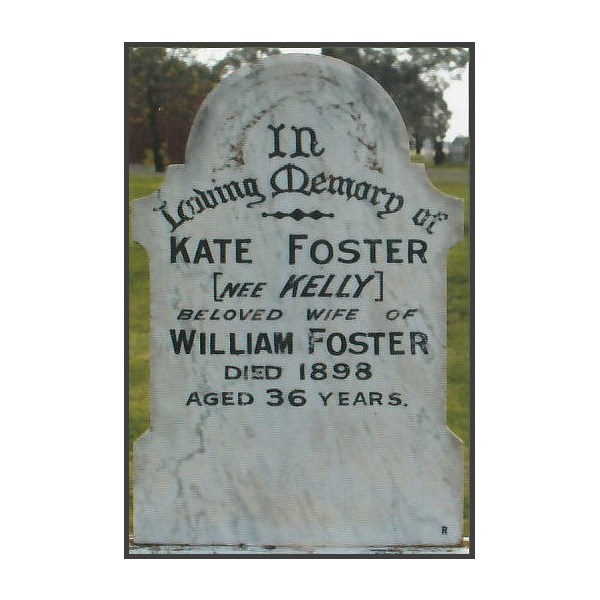
Kate Foster, nee Kelly
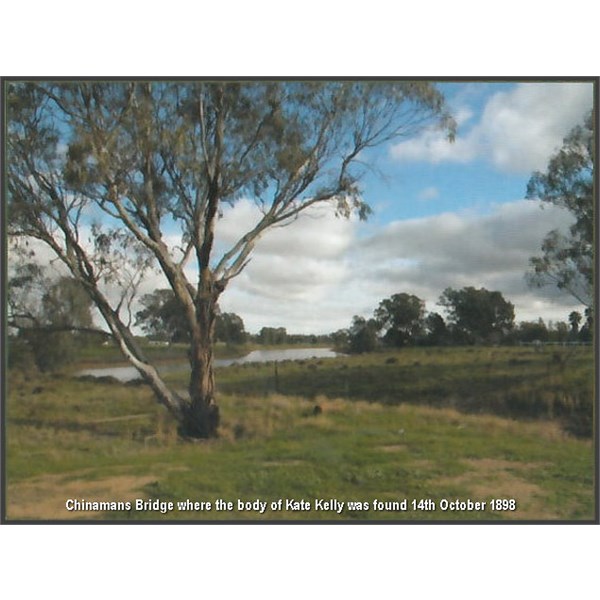
Chinamans Bridge
Kate's funeral took place the following day. She was buried in the Anglican Section of the Forbes
Cemetery. Brother, Jim Kelly, drove from Greta in Victoria to collect the three surviving children so their grandmother, Ellen Kelly, could care for them on the family selection at Eleven Mile Creek. Baby Catherine died before Jim Kelly arrived in Forbes.
Frederick Kelly became beekeeper at Myrrhee in Victoria and enlisted in the 17th Battalion of the AIF in World War I. He was killed in France in 1917.
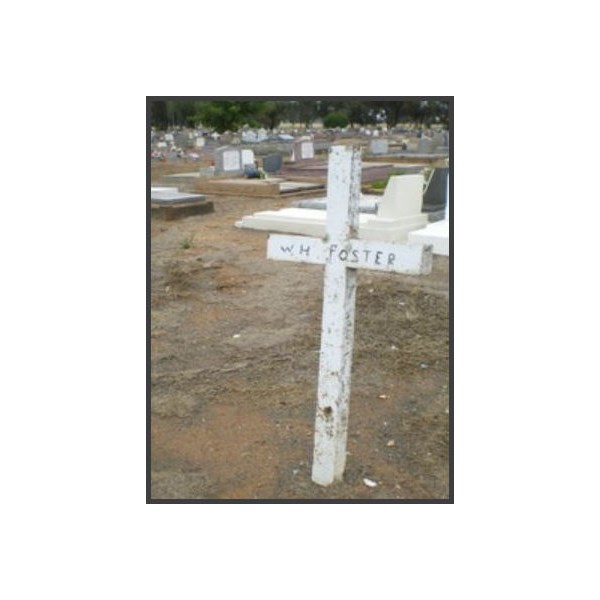
William ''Bricky'' Foster's grave in the Anglican section of Forbes Cemetery,
Eldest daughter, Gertrude Eileen Ada, aged 20 married Douglas Cavanagh in
Melbourne in 1910. The couple had two children,
John Frederick Arthur (1910) and Ruby Lylah (1911). Gertrude died in 1924. Her children were raised by their paternal grandmother in Corowa, NSW.
Ethel
Maude gave birth to a daughter - Grace
Foster in 1915. The following year she married Albert Hibbert. After Grace's death in 1916, she parted company with Albert and eventually divorced. She died at
Echuca in 1944 aged 49 years.
William
Foster had infrequent contact with his children and visited them on several occasions. He died in Forbes in August 1946 and was buried a short distance from Kate's grave. Sadly 'Bricky' was not survived by any of his children.
.